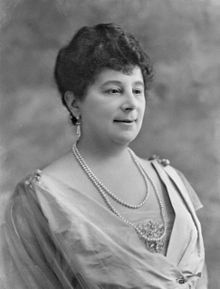 (1965-69)
(1965-69)
Members: John Sebastian (guitar, harmonica, autoharp, vocals), Zal Yanovsky (guitar), Steve Boone (bass), Joe Butler (drums)
All Music Guide
After Sgt. Pepper, most rock musicians turned away from hit singles and toward albums. Many of this period talked at the time about how they lost interest in top 40 radio, that they didn't really care for it and preferred to listen to albums. But there was one group that they always said was an exception: The Lovin' Spoonful.
The group had its origins in New York's Greenwich Village. Guitarist Zal Yanovsky had become a member of the Mugwumps with Cass Eliott and Denny Doherty, who soon gained pop fame as half of the Mamas and the Papas.* After the Mugwumps broke up, Yanovsky started working with Sebastian. The added Boone and Butler and started recording.
Their first single, Sebastian's "Do You Believe in Magic," went to number 9, and they followed up with a series of classic singles, with "Daydream," "Did You Ever Have to Make Up Your Mind?," "Summer in the City," "Rain on the Roof," "You Didn't Have to Be So Nice," and "Nashville Cats" hitting the top ten.
The hits were all written by Sebastian. He was able to take a combination of folk music, jug band music, and rock and turn it into a cheery new hybrid, usually called "good time music." Which described it well: there was a joyousness in every song and a sense of fun throughout. It started a trend**.
In addition to their singles and albums, they recorded two movie soundtracks: "What Up Tiger Lily?" for Woody Allen, and "You're a Big Boy Now" for a young Francis Ford Coppola.
Things were going well, but trouble struck in an unexpected way. Zal was arrested for possession of marijuana. Not unusual, but the police pressured him to name his supplier, threatening him with deportation (he was Canadian). The music community didn't forgive him and put pressure on him so much that he quit the group and moved to Canada anyway.
He was replaced with an old friend of the group, Jerry Yester. The group's sound changed and, though they had a couple of hits,*** things were ending. Sebastian decided it was time to go solo. The group continued and even had some minor hits, but it just wasn't the same. They broke up in 1969.
Sebastian went on to a successful solo career****, starting with the album John B. Sebastian***** and hitting the charts a few years later with "Welcome Back," written as the theme song for the TV show Welcome Back, Kotter. Yanovsky released a quirky album called Alive and Well in Argentina, which was quickly forgotten. Yester, Boone, and Butler eventually reunited and are playing as the Lovin Spoonful even now.
While they were not a group known for their albums, their singles still have the power to make you smile.
________________________________________________
* Their song "Creeque Alley" includes references to Sebastian ("In a coffee house Sebastian sat") and Yanovsky ("Zal and Denny, working for a penny").
**The Turtles, for instance, who had a couple of minor hits with Dylan covers and who thought of themselves as a protest band, heard "Do You Believe in Magic?" and decided they'd rather be cheerful than Mr. Alienation, and recorded "Happy Together." The Grateful Dead reportedly saw the Spoonful and decided to switch from acoustic jug band to rock.
***Including "Money" (not the song the Beatles covered), which is a loving paean to the capitalism and the banking system.
****He was an extremely likeable live performer. I saw him live at the Union College Memorial Chapel in the early 70s. Sebastian came on and, with wonder in his voice said, "I've never played in a chapel before," then broke into a few bars of "Chapel of Love." Great show.
*****Probably the only record to ever be bootlegged by a major recording company. Sebastian signed with Reprise Records for the album, but MGM Records (the parent company of the Spoonful's label) claimed he owed them an album, so they pirated the tapes and sold it. MGM lost the ensuing legal battle. They tried again by releasing a live John Sebastian album the next year, but again, they were told to cut it out, and Sebastian released his own live album in response.
.jpg) (1987)
(1987) 
 In the film, Corky Withers (Anthony Hopkins) is an aspiring stage comic who comes up with ventriloquism as a gimmick for his career. His dummy, Fats, is foul mouthed and rude, and makes Corky into a star. But just as his agent Ben (Burgess Meredith) lines up a prime time TV show for him, he vanished into the Catskills.
In the film, Corky Withers (Anthony Hopkins) is an aspiring stage comic who comes up with ventriloquism as a gimmick for his career. His dummy, Fats, is foul mouthed and rude, and makes Corky into a star. But just as his agent Ben (Burgess Meredith) lines up a prime time TV show for him, he vanished into the Catskills. There are, of course, many one-hit wonders, groups that had a single hit and were never heard from again. Usually, you remember the name of the group when you hear the song, but in the case of Bent Fabric, his name has been completely forgotten, despite the fact that his one hit is still played around the US -- just not on the radio.
There are, of course, many one-hit wonders, groups that had a single hit and were never heard from again. Usually, you remember the name of the group when you hear the song, but in the case of Bent Fabric, his name has been completely forgotten, despite the fact that his one hit is still played around the US -- just not on the radio.